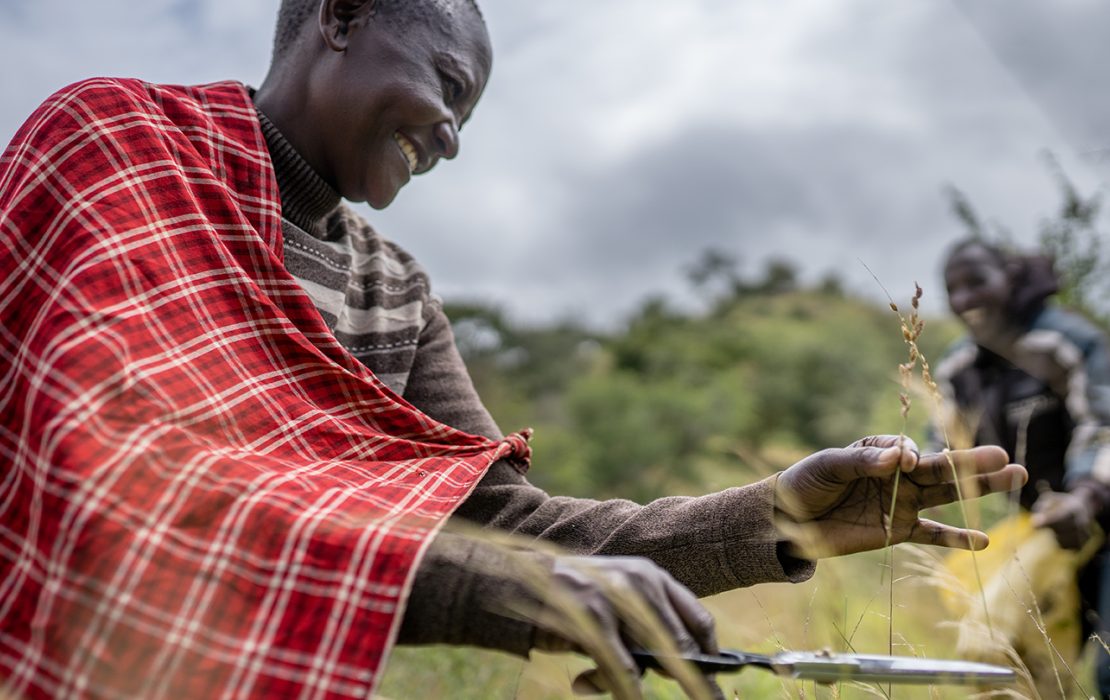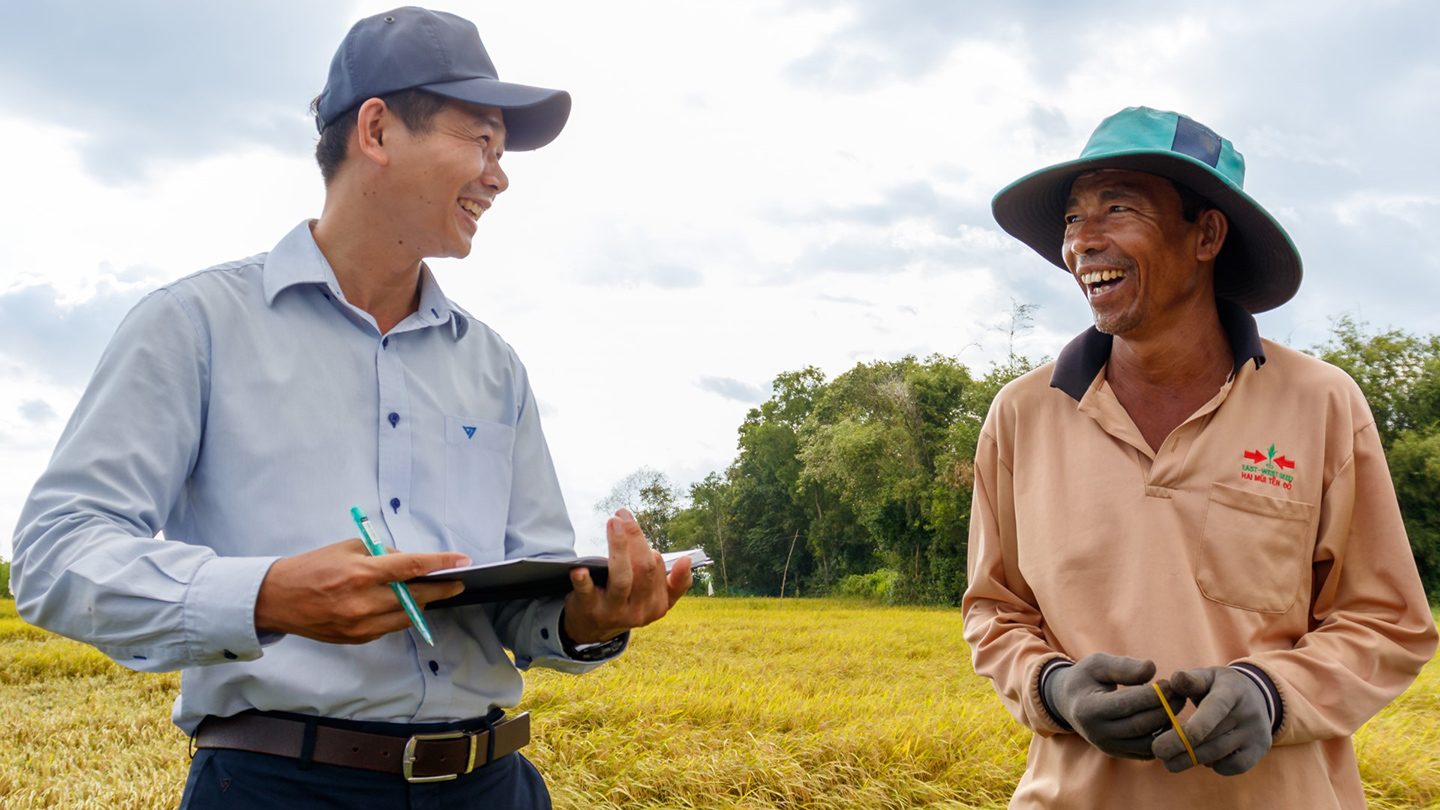
Hiep hoi Cao dang Cong dong Viet Nam (VACC) is applying novel solutions to water scarcity on shrimp farms. Photo: VACC
Fields in Malawi scorched by drought. Village wells in Bangladesh contaminated by floods. Fish stocks disappearing from warming Pacific waters. As climate science has long warned, extreme weather events are becoming more frequent and severe, threatening communities around the world.
For developing countries, especially those on the frontlines of climate impacts, the urgency to scale up climate adaptation efforts has never been greater. But top-down solutions alone won't solve the challenges ahead. Locally led adaptation – in which communities shape and drive responses – is vital to building lasting resilience.
As UNDP, we believe it is essential that we ramp up global support for grassroots innovation on climate change adaptation. World leaders at the 29th United Nations Climate Change Conference (COP29) in Baku, Azerbaijan must recognize that small-scale, locally driven projects are not only viable but critical for long-term resilience and fund them accordingly.
Our Adaptation Innovation Marketplace (AIM) is already demonstrating what is possible when local initiatives receive the finance, expertise and partnerships they need to thrive.
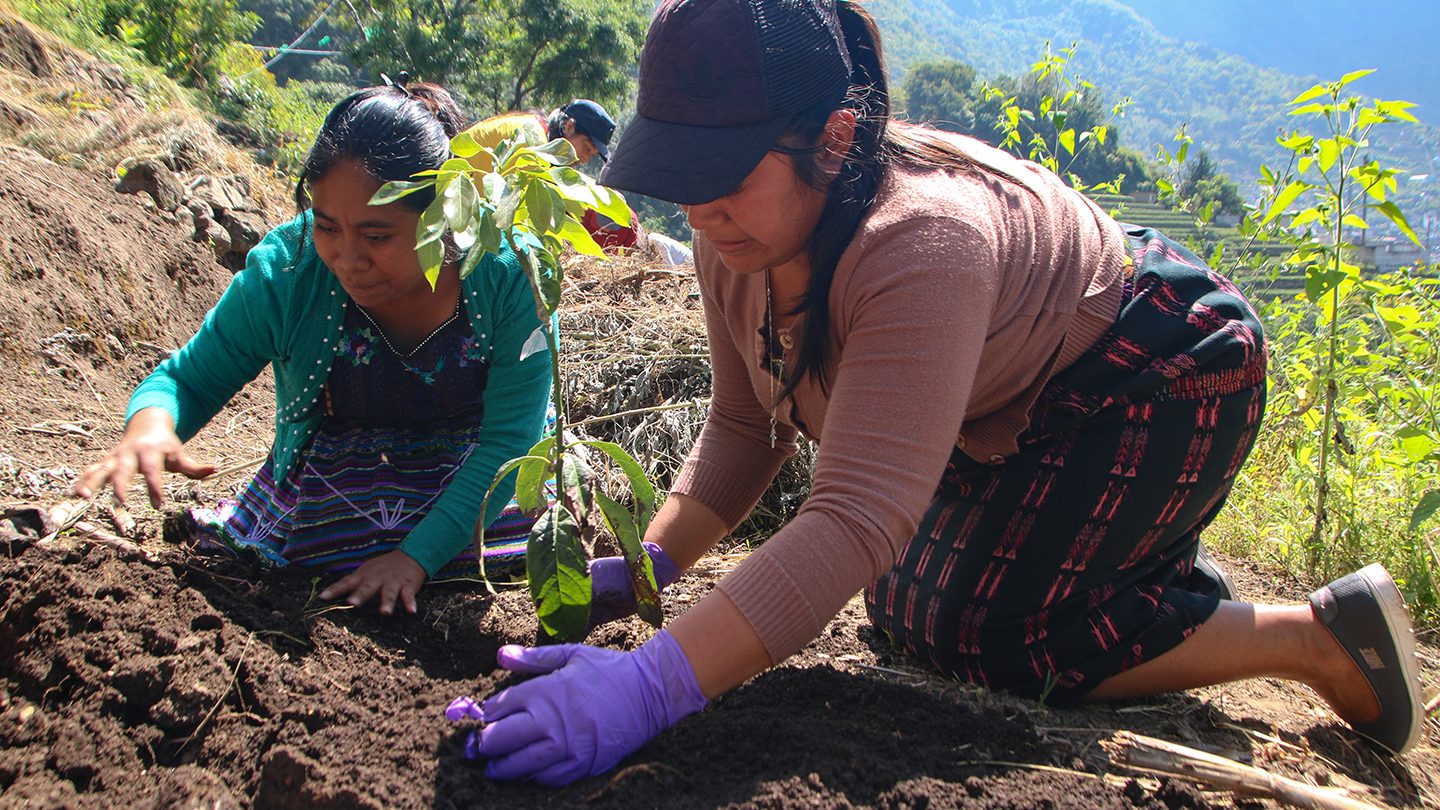
Asociación Natün is reviving traditional Maya climate-resilient farming practices in Guatemala. Photo: Asociación Natün
Scaling up locally led solutions
History teaches us that adversity drives innovation. Nowhere is this more evident than in the Global South, where communities are developing creative, homegrown solutions to protect their futures from climate impacts.
Despite their immense potential, however, grassroots solutions continue to be vastly underfunded. A significant obstacle is the insufficient flow of climate finance. Contrary to commitments at the global level, many local organizations remain cut off from the financial resources needed to sustain and scale up their efforts. Operating within very tight constraints and without access to larger investments, most struggle to survive, let alone grow.
Funding of course, is only part of the equation. To scale up, these initiatives require access to technical expertise, business development support and international partnerships. This is why UNDP and partners came together to create the Adaptation Innovation Marketplace.
Unlocking capital for climate resilience
Launched in 2021, the Adaptation Innovation Marketplace aims to bridge the gap between local climate solutions and the global financial community by connecting innovators with public and private investors and by equipping them with the tools and expertise to scale their efforts. It does this through two main programmes: the Adaptation Fund Climate Innovation Accelerator (UNDP-AFCIA) and the Resilience for Peace and Stability, Food and Water Security Innovation Grant Programme.
Financed by the Adaptation Fund and the European Union, the UNDP-AFCIA focuses on empowering non-government and civil society organizations in developing countries, with a particular focus on young entrepreneurs, women, Indigenous Peoples, persons with disabilities and other vulnerable groups. Grants ranging from US$60,000 to $250,000 are designed to help organizations expand their efforts from small-scale initiatives to scalable projects that can attract larger investments.
Meanwhile, with finance from the Global Environment Facility, the Resilience for Peace and Stability, Food and Water Security Innovation Grant Programme is dedicated to supporting non-profit organizations operating in fragile contexts. Through this programme, AIM has provided grants of $200,000 to $300,000 to community-driven adaptation projects in Uganda and Sudan.
Together, these programmes are unlocking capital and technical assistance for grassroots solutions, while also providing international advocacy opportunities and peer-to-peer knowledge-sharing services.
We are seeing some inspiring results.
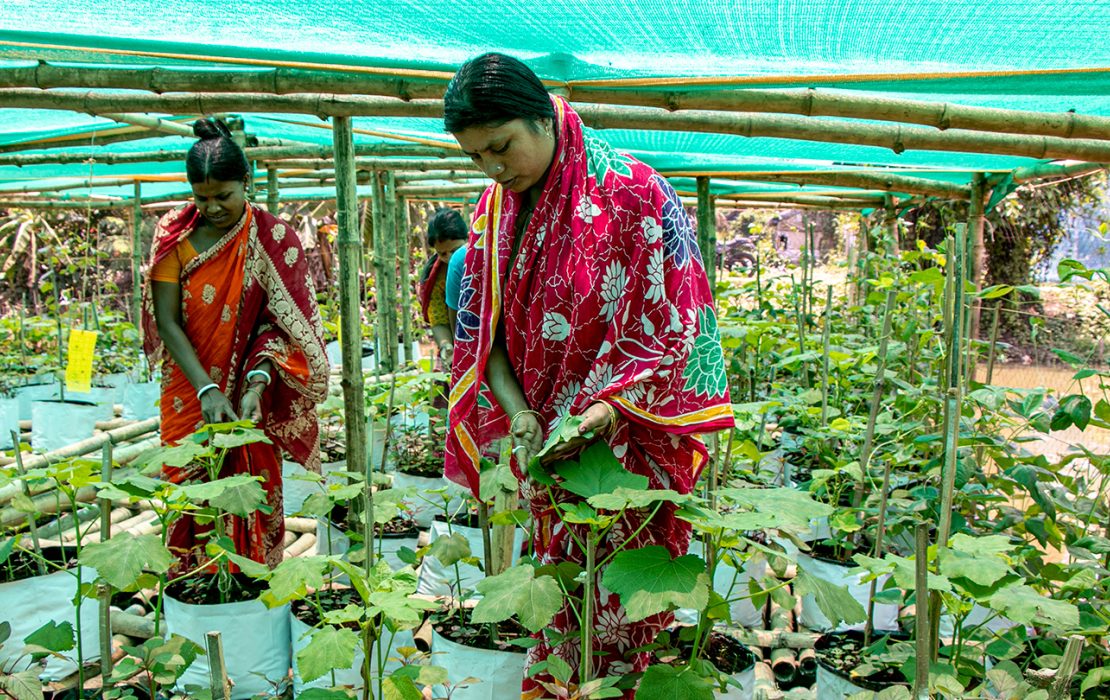
The South Asian Forum for Environment (SAFE) in India trains women farmers float farming. Photo: SAFE-India

Ugandan coffee organization Mountain Harvest is supporting smallholder coffee growers. Photo: Mountain Harvest
Take the South Asian Forum for Environment (SAFE), which received a grant from UNDP-AFCIA. Based in India, SAFE is pioneering hydroponic floating farms and aquaculture to help communities in flood-prone areas maintain production throughout the year. By utilizing AIM’s financing and technical assistance and drawing on other sources of blended finance, SAFE is now investing in decarbonized cold-chain infrastructure, thus boosting the economic viability of these floating farms and making the initiative more attractive for green financing.
Or consider Ugandan coffee organization Mountain Harvest, which is supporting smallholder coffee growers by offering fair compensation for their crops and low-cost financing, supported by a grant from the Resilience for Peace and Stability, Food and Water Security Innovation Grant Programme. By reducing their financial stress, the organization is enabling the growers to invest in climate-resilient practices like agroforestry, a land use management system that integrates trees with crops or pasture, improving soil quality and water efficiency. The increased resilience also allows them to diversify revenue sources.
These are just two of many examples under AIM which illustrate how, with the right support, locally led innovations can scale up their impact.
Expanding partnerships and impact
Many traditional funding channels overlook smaller initiatives, but AIM’s comprehensive support is helping them grow, ensuring they can thrive in the long term.
We need a coordinated approach and indeed, what makes AIM’s work possible is a vast network of partners. Organizations like the International Centre for Climate Change and Development (ICCCAD), the Least Developed Countries Universities Consortium on Climate Change (LUCCC), the Global Resilience Partnership (GRP), the EU-funded Climate-Knowledge Innovation Community (Climate-KIC) and UN Capital Development Fund (UNCDF) offer essential technical support. AIM has also forged strategic alliances with the Climate and Development Knowledge Network (CDKN) and impact investment networks like the Asia Venture Philanthropy Network (AVPN), African Venture Philanthropy Alliance (AVPA) and Latimpacto. Complementing these partnerships is UNDP’s global network of country offices, through which AIM can deploy funding to hard-to-reach communities.
One of AIM’s most innovative collaborations is its internship programme for Master of Business Administration (MBA) students. Developed in partnership with the Global Resilience Partnership, the programme connects MBA students from leading business schools – including Yale, Oxford and other members of the Global Network for Advanced Management (GNAM) – to initiatives in need of support.
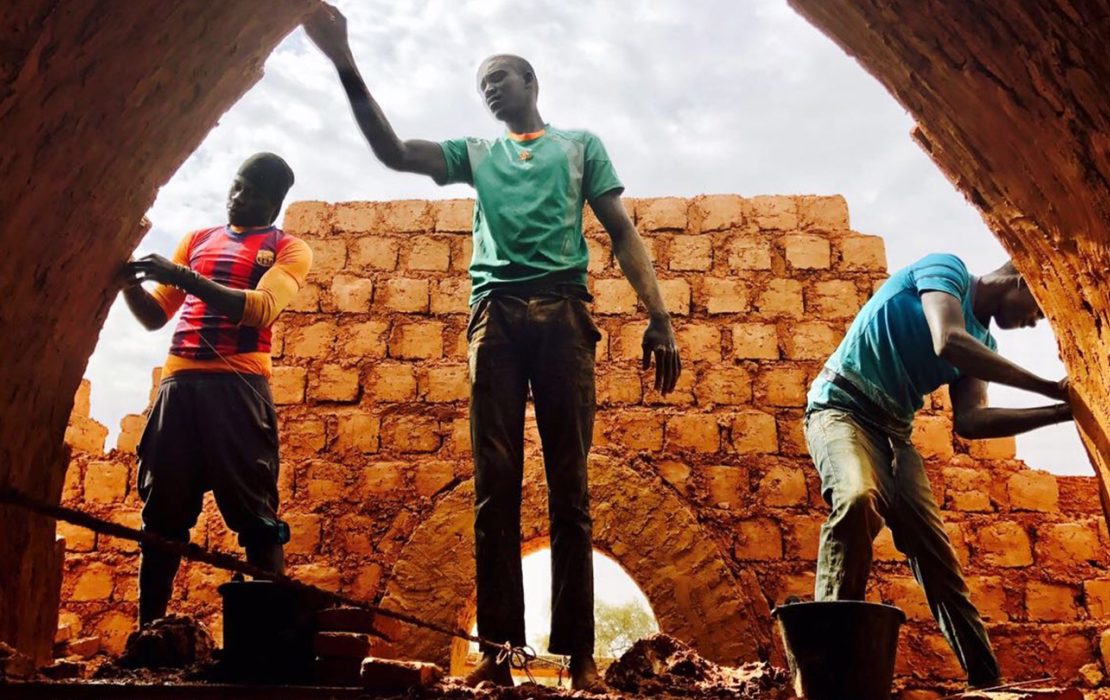
Nubian Vaults is reviving an ancient architectural process in the Sahel. Photo: Association la Voûte Nubienne (AVN)

SAMPLE Uganda Aquaculture Association is scaling up aquaponics technologies for climate resilience in Uganda. Photo: SAMPLE Uganda Aquaculture Association
Under the programme, over the past two years, more than 50 students were assigned to more than 20 initiatives, helping them to refine business models, explore new markets and enhance impact reporting and communication.
For example, one MBA student from the University of Oxford worked with SAMPLE Uganda Aquaculture Association, a local organization that received a grant under UNDP-AFCIA, to strengthen its aquaponics technology business model. The result was a clearer pathway for scaling the initiative in future years. Likewise, a University of Oxford MBA student supported Nubian Vaults Association in West Africa to develop a more targeted strategy for entering the carbon credit market, unlocking a valuable new revenue stream.
In Argentina, AIM was also able to connect students with finance expertise to Fundacion Proiectum, an organization that received a grant under UNDP-AFCIA. The students provided critical guidance on transforming non-profit operating models into sustainable, revenue-generating structures for long-term viability and impact.
The benefits of these partnerships were mutual, with the organizations benefiting from technical expertise and the students gaining insight into real-world, front-line examples of climate adaptation, resilience-building and climate entrepreneurship.
The University of Cape Town’s Graduate School of Business developed a teaching case study based on Mountain Harvest's approach for use in classes in the fields of inclusive and sustainable value chains, social innovation, responsible business strategy and entrepreneurship – contributing to forming the next generation of climate action leaders.

In October 2023, a UNDP-AFCIA workshop in Manila brought together 44 organizations from 32 countries for networking and knowledge exchange. Photo: UNDP
Funding from global to local. Solutions scaling from local to global
By highlighting the success and potential of locally led innovations, AIM aims to reshape the global narrative on climate finance, moving away from seeing small-scale projects as risky investments to recognizing them as viable opportunities for impact and resilience-building. This drive aligns with international commitments like the Principles for Locally Led Adaptation and the Sustainable Development Goals, which emphasize the importance of empowering local communities and ensuring that adaptation efforts are inclusive, sustainable and driven by those most affected by climate change.
AIM has already demonstrated substantial results. Since its inception, the initiative has awarded more than $7.5 million in grants and provided an additional $6 million in technical assistance to 44 organizations across 33 countries. More than one million people have benefitted, directly or indirectly.
Ultimately, AIM is more than just a funding platform. It’s a catalyst for resilience, driving transformative change with communities in the driver’s seat.
As we continue the fight against climate change, initiatives like AIM will become ever more crucial in advancing adaptation, demonstrating that even the smallest efforts can have significant global impact.
***
Do you want to know more about climate change adaptation and why it is crucial? Check out our explainer here.

